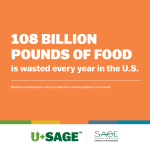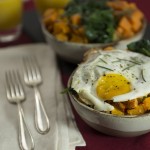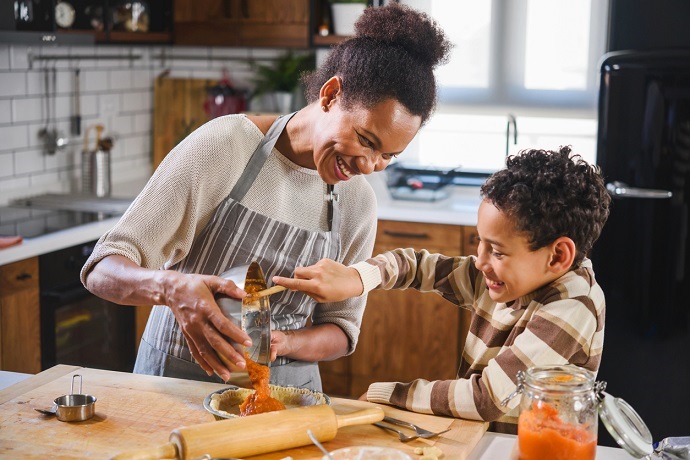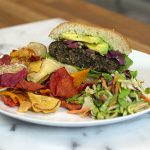While cooking may sometimes feel like another chore, it can also be a great opportunity! Use the time in the kitchen to bond with your family and reinforce math and science skills with your children.
Cooking and eating are social activities and are much more enjoyable when shared with others. While you’re cooking, consider sharing stories about recipes that have been passed down and family members you’re not able to see during this time of isolation. It might even be a good time to have a family member or friend give a cooking lesson via videoconference!
Now is a great time to get into the habit of eating together at the table. According to the American College of Pediatricians, family meals provide a feeling of safety and security for children and allow parents to gain insight into their children’s mental well-being. The benefits of the family table extend to improved academic performance, decreased risk of substance abuse and other high-risk behaviors, reduced emotional stress, and better family relations.
If you’ve suddenly become a homeschool parent, cooking can also be a way to reinforce math and science skills with real-world applications. Consider illustrating fractions and measurements using measuring cups and spoons or having your children practice math skills by changing the number of servings on a recipe.
There’s a lot of science in cooking as well. Consider showing your children how yeast consumes sugars to make bread rise, how the fat and liquid from cream separate into butter and buttermilk after you shake them in a jar, or how the stages of matter change as ice melts into water and is heated into a gas.
Prepare yourself for a mess in the kitchen and on your children’s clothes as they learn how to measure, mix, chop, and cook. Make sure to build extra time into recipe preparation and keep your mood relaxed. Prioritize safety by considering each child’s age and skill set. Here are some tips to get you started:
- Wash your hands for 20 seconds before starting, after handling raw meats and eggs, and after cooking food.
- Select a recipe with enough steps for everyone to do at least one.
- Consider letting your children pick the recipe so they’re excited to cook and eat it.
- Focus on age-appropriate skills:
- 3-5 years old – Help gather ingredients and equipment, mix ingredients, wash produce, and tear herbs.
- 6-7 years old – Wash and prepare produce, including peeling vegetables; crack eggs; measure and mix ingredients; cut herbs with scissors; and set the table.
- 8-9 years old – Use the microwave, open cans, and take meat temperatures.
- 10 years old and up – Cook foods using the microwave, stovetop, and oven; use a knife to prepare produce; plan the meal; and take the lead in following the recipe.
- Never leave children alone in the kitchen!








